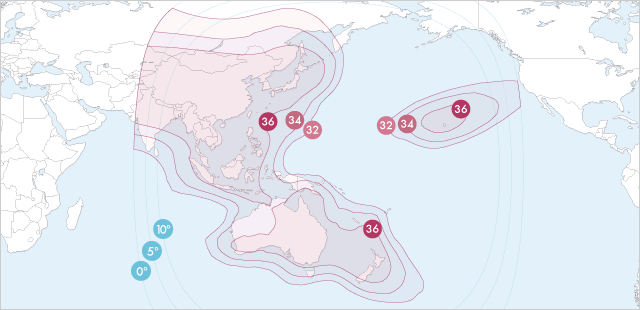Mission type Communication COSPAR ID 2002-015A Launch mass 2,460 kg Rocket Ariane 4 | Operator SKY Perfect JSAT Group SATCAT no. 27399 Launch date 29 March 2002 Launch mass 2,460 kg Bus Boeing 601 | |
 | ||
Names JCSAT-8 (Apr 2000 to Mar 2002)JCSAT-2A (Mar 2002 onward) Manufacturer Boeing Satellite Development Center Similar JCSAT‑5A, Superbird‑C2, N‑SAT‑110, JCSAT‑RA, Superbird‑B2 | ||
JCSAT-2A, known as JCSAT-8 before launch, is a geostationary communications satellite operated by SKY Perfect JSAT Group (JSAT) which was designed and manufactured by Boeing on the BSS-601 platform. It has Ku band and C band payload and was used to replace JCSAT-2 at the 154°East longitude. It covers Japan, East Asia, Australia and Hawaii.
Contents
Satellite description
The spacecraft was designed and manufactured by Boeing on the BSS-601 satellite bus. It had a launch mass of 2,460 kg (5,420 lb) a power production of 3.7 kW and a 11 year design life. Stowed for launch it measured 3.6 m × 2.7 m × 4.3 m (11.8 ft × 8.9 ft × 14.1 ft), with its solar panels and antennas deployed it measured 21 m × 4.3 m × 7.6 m (69 ft × 14 ft × 25 ft).
Its payload is composed of sixteen 57 MHz Ku band plus eleven 36 MHz and five 54 MHz C band transponders, for a total bandwidth of 1,578 MHz. Its high power amplifiers had an output power of 120 Watts on Ku band and 34 Watts on C band.
The Ku band footprint covers only Japan, while the C band beams cover Japan, East Asia, Australia and Hawaii.
History
In April 2000, JSAT ordered JCSAT-8 from Boeing (which had acquired the HS-601 business from Hughes), to replace JCSAT-2 at the 154° East slot. It would provide coverage to Japan, East Asia, Australia and Hawaii.
An Ariane 44L successfully launched JCSAT-8 on March 29, 2002 at 01:29 UTC from Guiana Space Centre. Once successfully deployed, it was renamed JCSAT-2A.
